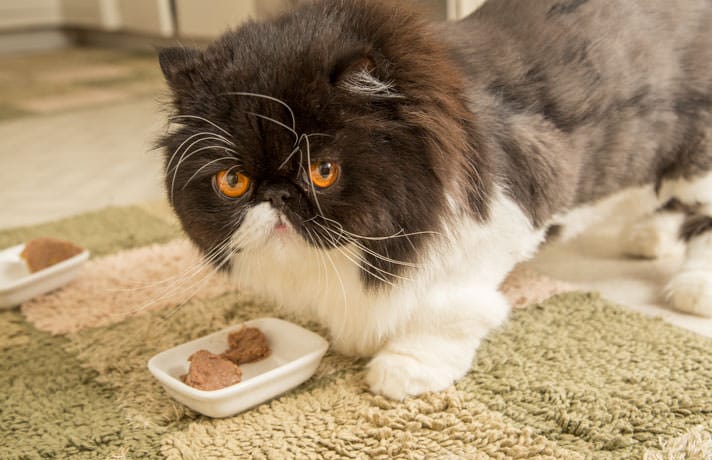Like humans, our feline friends can develop allergies when their immune systems become hypersensitive to allergens. More pets encounter allergies than many people realize, and an estimated 10 to 20 percent of our four-legged friends experience food allergies, says David McGuffin, a board-certified veterinarian at Riverside Drive Animal Care Center in Dublin, Ohio. In the world of cat allergies, food ranks third, following flea and inhalant allergies.
Signs And Symptoms
When cats are affected by food allergies, they typically develop dry, itchy skin or red rashes, especially around the face and ears. This can be heartbreaking to watch day after day. Left untreated, cats can develop skin infections from the moisture and traumatize their own skin, says Ann Hill, a board-certified veterinarian at Canfield Vet, Dog and Cat Hospital in Pittsford, New York.
If your cat also is experiencing flatulence, burping, gas and other gastrointestinal signs, it might point to a food allergy, but more commonly indicates a food intolerance, Hill says. Unlike allergies, where the cat’s immune system views food ingredients or contaminants as harmful and creates an antibody to attack them, intolerance is a digestive issue where the cat’s GI tract cannot digest the offending ingredient and reacts.
Because itchy skin is a common symptom for other allergies, you can’t diagnose a food allergy from these symptoms alone, says Gary Thompson, a board-certified veterinarian at West Suburban Animal Hospital in Toledo, Ohio. However, if the symptoms started in winter or occur year-round, and the itchy skin does not respond to steroid or other medical treatments, your cat might be experiencing food allergies.
“Primary food allergies are most commonly seen in younger pets and older pets, but symptoms generally develop over time,” Thompson says. “True food allergies typically bookend with cats less than 6 to 9 months and older than 8 to 9 years. Hypersensitivity and allergic reactions are about exposure, so they get worse with time.”
Simple Diagnosis
If you think your cat is suffering from allergies, visit your veterinarian. To date, there are no blood or skin tests that reliably diagnose food allergies in cats, according to Hill and other veterinarians interviewed for this article, so after ruling out other common cat disorders with similar symptoms, such as flea and inhalant allergies, it’s time for the food elimination trial.
Your veterinarian, veterinary dermatologist or veterinary nutritionist can be a big help with this process. They will have you start by eliminating all the foods and treats your cat has been eating. The most common food allergens for cats are beef, dairy and seafood because they are such common ingredients in the commercial cat food diets we feed our pets. Cats also can be allergic to artificial food coloring, cornmeal, corn gluten meal, milk powder or cheese, chicken, eggs and more.
Eliminate And Then Challenge With Possible Allergens
Your cat will be switched to a novel food diet. This type of diet contains only one protein and one carbohydrate, both of which are different than anything your cat has been exposed to before, Hill says. Some examples are venison and green peas, duck and potatoes or rabbit and barley. Another option is a hydrolyzed diet in which the protein in the food is broken down so small that the immune system can’t recognize it and attack it, Hill says.
“We use all different diets and basically figure out which one works,” McGuffin says. “Keep it simple. Cooking for your pet is fine, and sometimes we need to do that during the food trial. It eliminates contamination and variation between bags [or cans], but it’s not recommended unless you do it correctly, so consult with a [board-certified] veterinary nutritionist.”
Giving your cat any other foods, including treats and human foods or vitamins, during the trial will invalidate the results, so you might need to keep your cat indoors during the trial and feed other household pets separately. Veterinarians also recommend feeding your cat the new diet for 8 to 12 weeks to give time for the allergen to run its course and for infections to clear up.
If your cat is doing worse or is not better, abort the trial and try another diet for another 8 to 12 weeks, McGuffin says. If the symptoms clear up with the elimination diet, food allergy likely is the cause and you are halfway to a definitive diagnosis. The other half is a food challenge where you give your cat the old food to see if the symptoms return.
After a couple of weeks on the old diet, if the symptoms return, you have confirmed the food allergy diagnosis. On the other hand, if the symptoms do not return, gradually add more items, such as treats and different meat and grain proteins. Introduce items one at a time and give your cat a couple of weeks with each new item to witness any allergic reaction. This process lets you identify which specific allergens your cat needs to avoid.
Treatment Options
Once you have an accurate diagnosis, treatment starts with helping your cat avoid the offending food allergens, Thompson says.
Antibiotics treat skin infections caused by the itching and licking, and common corticosteroids or antihistamines available for human use, can control itching. To keep cats safe and healthy, always check with your veterinarian before using these products on your pets. Some over-the-counter human medications are combination products, such as an antihistamine with a decongestant, that can cause problems in pets. Also, dosage for cats is very different than for humans.
While veterinarians agree that there is no way to prevent food allergies in cats, finding one good diet your cat does well on and sticking with it can help.
“Switching diets tends to cause cats to be more prone to allergies because they are introduced to more potential allergens,” Thompson says.
And sensitive or allergic cats can develop new food allergies over time. If that happens, simply visit your veterinarian and re-evaluate your cat’s diet.
It is difficult to see our family pets suffer, but take heart, because solutions for cat food allergies are available and veterinarians are available and trained to help walk you through the process of restoring your cat to comfort and health.
By: Sandy Chebat
Share:









